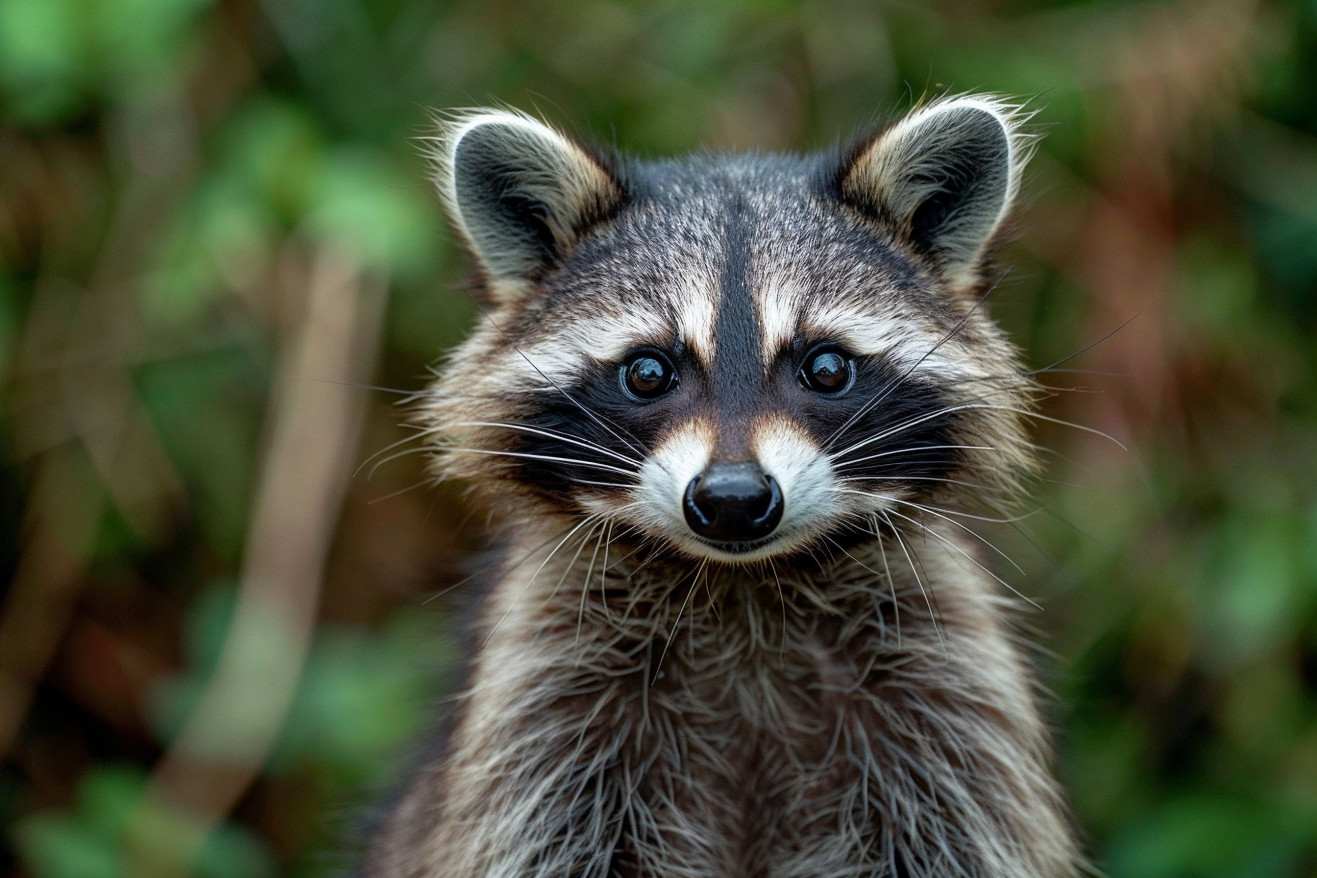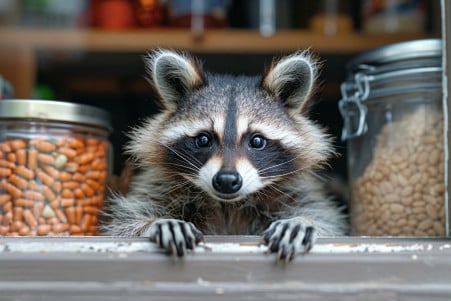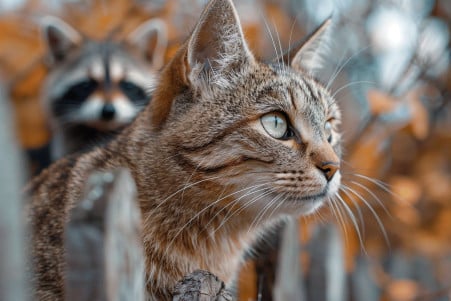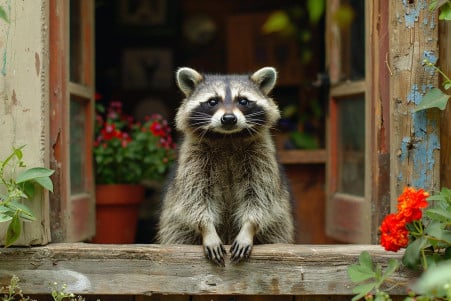How Long Do Raccoons Live? Understanding Their Longevity
29 March 2024 • Updated 29 March 2024

Raccoons are known for their intelligence and adaptability, and they are one of the most common urban mammals, but how long is the average raccoon lifespan? In the wild, raccoons live to be 2-3 years old, but in captivity, they can live much longer, with the oldest raccoon on record living to be over 20 years old. In urban areas, where food is easy to come by and threats are less severe, raccoons can live to be 5-6 years old. However, their ability to survive depends on avoiding predators, cars, diseases, and other threats.
In this article, we'll take a deep dive into the results of extensive research conducted by wildlife biologists and ecologists to learn more about how long raccoons live in various environments. We'll also look at their life stages, behaviors, predator avoidance strategies, and causes of death to get a complete picture of the raccoon's lifespan and the factors that influence it. This research has implications for how we can live in harmony with raccoons in urban areas.
How Long Do Raccoons Live?
Raccoon Reproduction and Offspring
Raccoons breed in late winter or early spring, with mating occurring from December to June depending on the latitude, according to research from the Internet Center for Wildlife Damage Management. After a gestation period of about 63-65 days, most litters of 3-5 kits are born in April or May, although some late breeders may have litters as late as August.
Kits are born blind and deaf but develop quickly. Their eyes open at 3 weeks old, and their ear canals open soon after, according to a study cited by Sciencing. They start eating solid food at 6 weeks, and they are weaned between 2-4 months of age, according to the Internet Center for Wildlife Damage Management.
The mother raccoon is an important caregiver, carrying her babies by the scruff at first and teaching them important skills like foraging and tree climbing, according to NatureWorks. She is also very protective, defending her babies against predators. The family stays together for the first year, and then they start to separate the following spring, when the babies, who are darker than the adults, are 9-12 weeks old and can fend for themselves.
Things That Impact Raccoon Life Expectancy
Raccoons in the wild live an average of 2-3 years, says AAAC Wildlife Removal of Pensacola, and there are several reasons for this relatively short life expectancy.
One of the biggest reasons for the short life expectancy of raccoons is predation. The Washington Department of Fish & Wildlife explains that raccoons have few natural predators, with coyotes, bobcats, and large alligators being the most common. However, as research from the University of Florida points out, the number of raccoons killed by natural predators is minimal compared to the number killed by humans.
Diseases and parasites also play a large role in the life expectancy of raccoons. The Wildlife Rescue League says that raccoons are susceptible to a number of diseases, including canine distemper, rabies, and a variety of parasites. These diseases can spread quickly in high-density raccoon populations, leading to high levels of mortality.
In addition to natural causes, human activities, including hunting, trapping, and vehicle strikes, are major causes of raccoon mortality, according to AAAC Wildlife Removal of Pensacola. Urbanization and the resulting loss of habitat are also contributing factors to the relatively short life expectancy of wild raccoons.
On the other hand, raccoons in captivity can live much longer, with some living to be 20 years old, says AAAC Wildlife Removal of Pensacola. This is largely because captive raccoons are protected from predators and have access to veterinary care.
Raccoon Populations and Conservation
Raccoon populations have been increasing in both urban and rural areas of North America for the past several decades. A study in the Journal of Wildlife Management found that raccoon densities can vary widely by landscape, with bottomland hardwood forests having the highest densities compared to other rural land cover types.
The growth in raccoon populations is due to their adaptability and success in human-dominated landscapes. According to the Natural Resource Stewardship, raccoons are adept at finding food in farmyards, towns, and suburbs, and they have fewer predators in these areas than in rural landscapes.
The increase in raccoon populations has led to several problems, including hunting, trapping, and vehicle collisions, which are responsible for up to 90% of raccoon deaths in some areas, according to the Natural Resource Stewardship. In addition, urbanization and development have led to the loss of raccoon habitats.
Conservationists have responded by working to protect raccoon habitats and control their populations through measures such as oral rabies vaccination (ORV) programs. According to the Journal of Wildlife Management study, the relatively low raccoon densities in some rural areas can help keep the costs of ORV distribution down, making the programs more cost-effective. Maintaining a stable raccoon population is important for keeping ecosystems in balance and ensuring that people and raccoons can continue to coexist in urban areas.
Urban Raccoon Adaptations and Challenges
Raccoons have shown an incredible ability to adapt to urban and suburban environments, as noted by Call Northwest. As a result, these intelligent animals are now a common presence in cities, towns, and suburbs, where they have become well-suited to human-altered landscapes, often living in hollowed-out trees, caves, attics, and garages and taking advantage of the food sources that humans provide.
The urban environment offers raccoons many benefits, including fewer predators and access to a wide range of food. However, living near people also poses special problems. Raccoons are well-known for their frequent forays into gardens, garbage cans, bird feeders, and even kitchen cupboards, as noted by Call Northwest, and their ability to open doors and pet doors can lead to property damage and conflicts with homeowners.
In addition, the Washington Department of Fish & Wildlife warns that while raccoons are not generally a threat unless they are cornered or treated like pets, they can be dangerous in these situations. Raccoons are also carriers of several diseases, including rabies and canine distemper, which can be spread to unvaccinated pets and even people.
To ensure that people and urban raccoons can live together peacefully, the Wildlife Rescue League stresses the importance of responsible waste disposal, pet ownership, and public education. This includes securing food sources, such as making sure garbage cans are closed tightly and not feeding raccoons. Keeping a safe distance and avoiding contact with raccoons can also help reduce the risk of disease and conflict.
By learning about the special problems and benefits of living with urban raccoons, we can learn to live with these intelligent, masked animals in a way that is both balanced and responsible for both people and raccoons.
Conclusion: How to Help Raccoons and Live With Them
The lifespan of raccoons can vary greatly, depending on whether they live in the wild or in captivity. While wild raccoons typically live 2-3 years, those in captivity can reach up to 20 years of age. This stark difference is largely due to the numerous threats and challenges raccoons face in their natural environments, including predation, disease, and human activities.
By understanding the complex factors that impact raccoon longevity, we can better appreciate the importance of responsible wildlife management and conservation efforts. Promoting responsible human behavior, such as proper waste disposal and avoiding direct contact with raccoons, can help prevent conflicts and disease transmission. Additionally, supporting initiatives that protect raccoon habitats and maintain healthy populations is crucial for preserving the ecological balance and ensuring peaceful coexistence between humans and these fascinating urban dwellers.
Ultimately, respecting and coexisting with raccoons is not only beneficial for the species, but also for the overall health of our shared environment. By embracing the presence of these adaptable and intelligent creatures, we can foster a deeper appreciation for the natural world and our role in its preservation.


